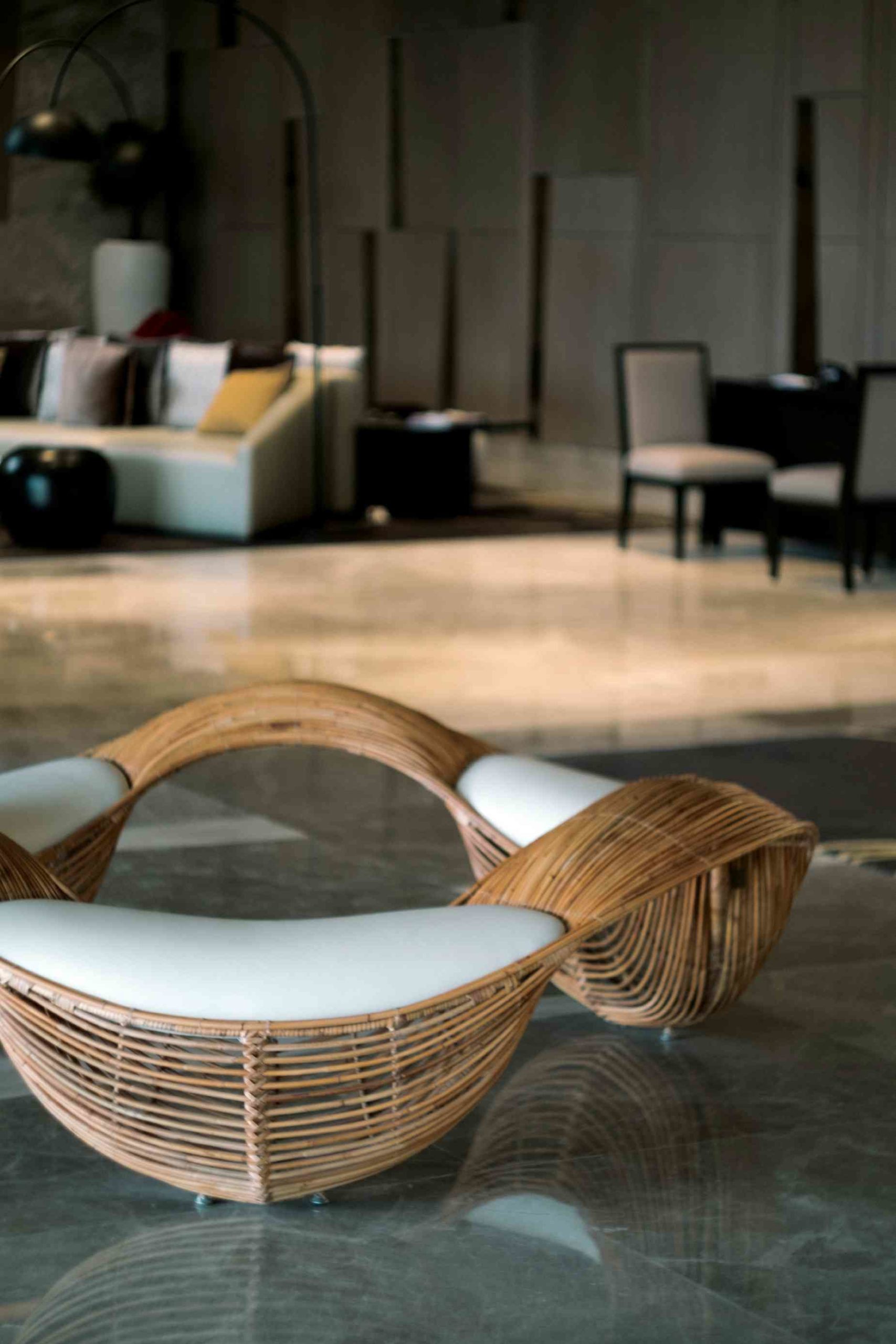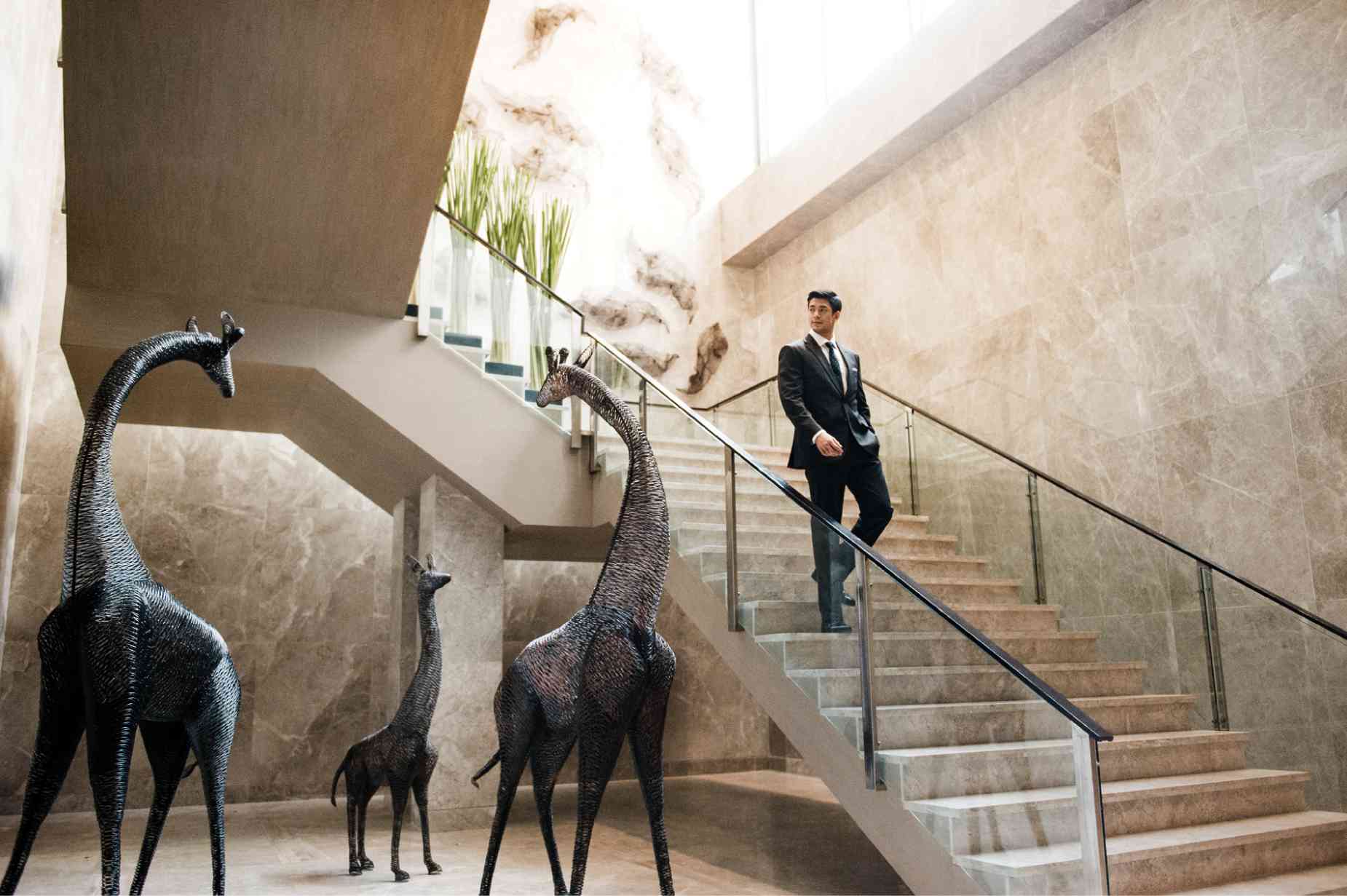
Exceptional experience has become the coveted touchstone, as competition in the local hotel industry intensifies. Seda Vertis North in Quezon City, the first five-star hotel of the Ayala business/leisure hospitality chain, banks on equal parts “uncomplicated” interior design and “great” service.
“Our design DNA is simple—muted colors, balance, timelessness,” says Ayala Land Hotels and Resorts AVP and senior architect Edwin Yabut.
In the final rendering, bright accent colors brighten up spaces of warm grays and silvers.
Behind the backlit reception desk, an expansive artwork by Jaime Zobel de Ayala, a Seda signature, is a bold statement. The color scheme here is elegant and calming, with touches of wood veneer lending some warmth.
The lobby is a vibrant working space, with a sofa arrangement that underlines the “expanded living room” mood.
As a rule, the artwork in every Seda hotel situates the guests with images of its location. Vertis North’s collection shows off a bustling Quezon City in black-and-white abstractions.
Yabut points out that while most deluxe hotels opt for floral carpet patterns to create a sense of being in the tropics, the 438-room Seda North employs straightforward geometrics to maintain the understated ambience.
Three-in-one
The hotel’s “three-in-one” concept is immediately seen at the lobby level via an open layout that consists of a communal table of workstations, sitting areas furnished by local designers, and Misto, Seda’s first full-buffet restaurant.
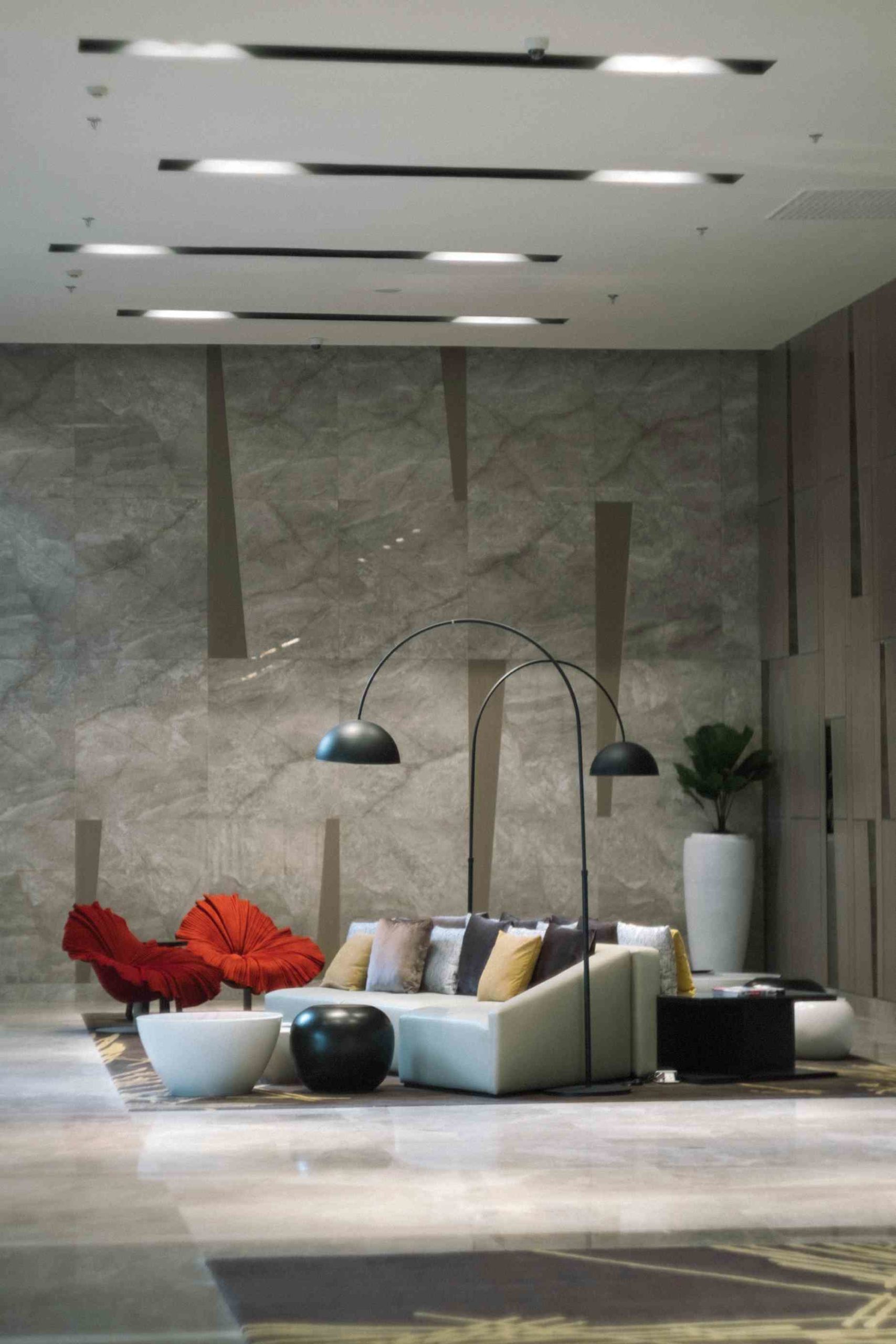
This layout is unique for its color-coded “islands”—red and green furniture pieces by designer Kenneth Cobonpue for one, and Vito Selma’s Baud benches made from arurog (a weed described as “rugged wicker”). Customized pendant lights created by Azcor complement the homey atmosphere.
“Yet it’s not your typical
living room,” Yabut points out. “Sofas are positioned back-to-back instead of facing each other.” The designers describe the end result as “isolated togetherness”: While all the furniture pieces are all part of one plan, they are arranged in clusters that encourage conversations and also ensure smoother foot traffic in the lobby.
Seda is the “first in the Philippines” to use Selma’s curvaceous Baud (literally, “wave”) benches, which are found in resorts in South America and Australia and a museum gallery in Israel.
The same functional lobby provides structures for personal entertainment (like selfies and groupfies). A family of wire-framed giraffes by Ann Pamintuan are positioned near the stairs, now a favorite spot for “Instagramming.”
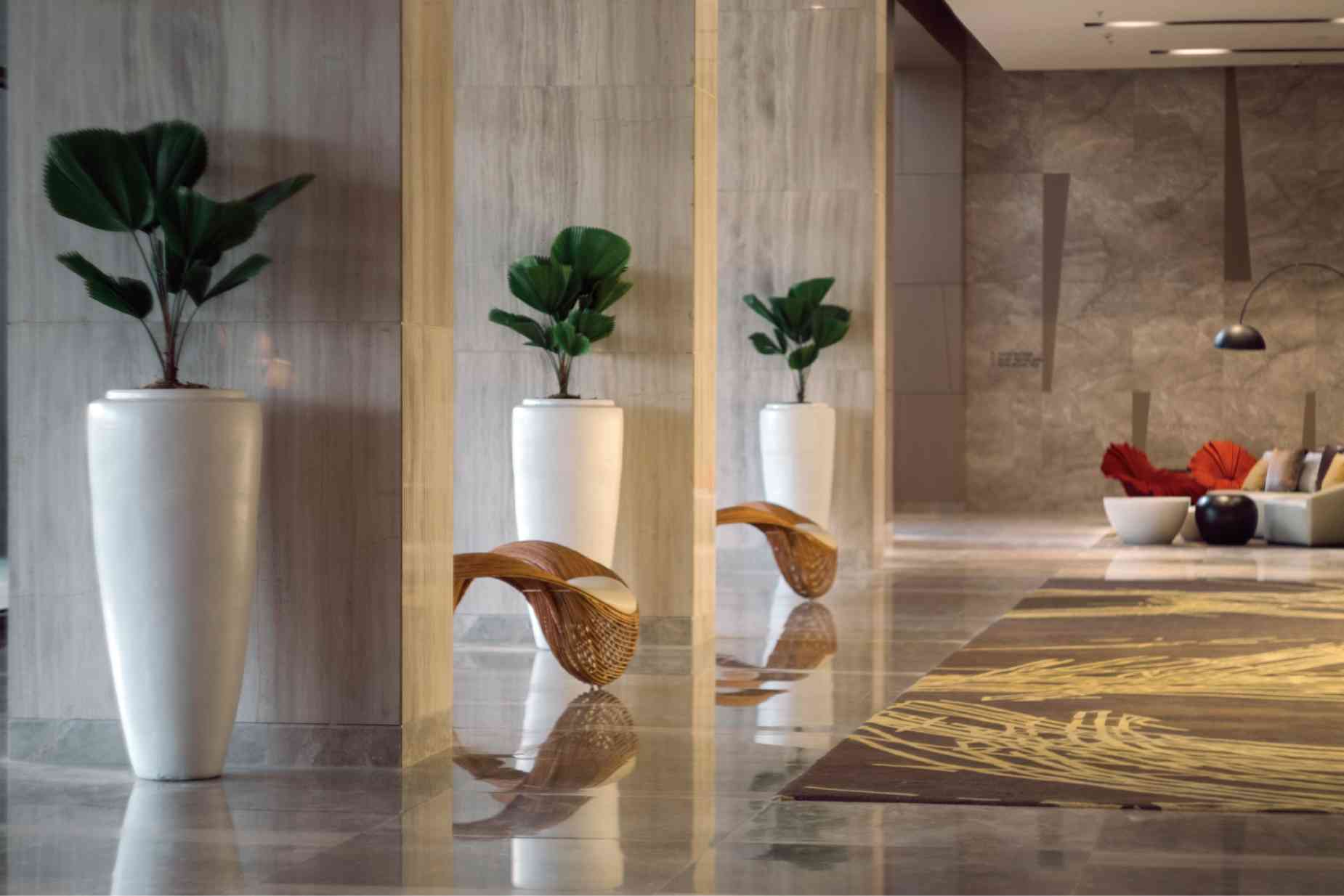
Ayala developments have consistently taken pride in their landscape designs. Seda Vertis is dotted with pocket gardens between the mall and the hotel. Wood furnishings enhance the guest experience of familiarity and large potted plants bring the outdoors in.
Misto’s huge window wall opens to garden views, offering a seamless transition.
Comforts of home
Traditional chain hotels’ cookie-cutter character has no place here. Guest bedrooms, for example, feature asymmetrical built-in headboards that incorporate night tables and drawers.
Surface treatment is, characteristically, warm oakwood veneer. The room comes alive with colors from the painting, or from the anthracite carpet’s hexagonal patterns of gray and yellow.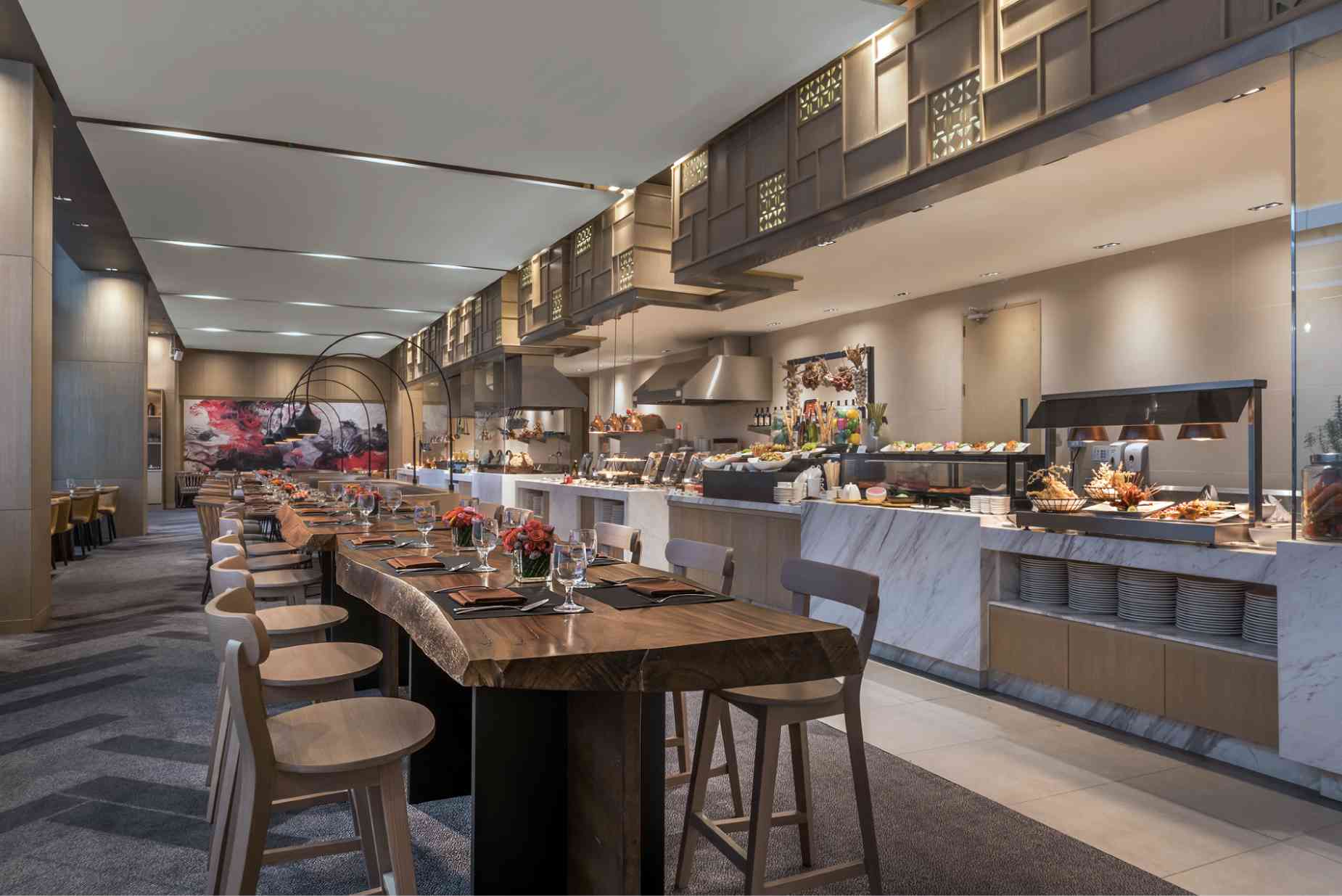
The writing desk is a round table with a stool, close to the corner sofa. “That’s part of the approach to make the room feel more like home,” says Yabut.
An opaque vertical window breaks up the “heaviness” of the wall between the bed area and the bathroom. “For a feeling of more space,” Yabut explains. “Some guests share rooms. Opaqueness allows more privacy.”Open cabinets include a platform for small luggage. “Our guests normally stay just one or two nights.”
Bars, lounges and presidential suites have become flexible spaces, the better to adapt to various types of functions. Seda Vertis’ Straight-Up roof deck bar has sections for private party setups, with outdoor furniture by Cobonpue that can be rearranged according to the size of the gathering. For an extra treat, guests get to enjoy—from 20 stories high—views of green spots around Quezon City, as far as the Antipolo Hills.—CONTRIBUTED INQ
